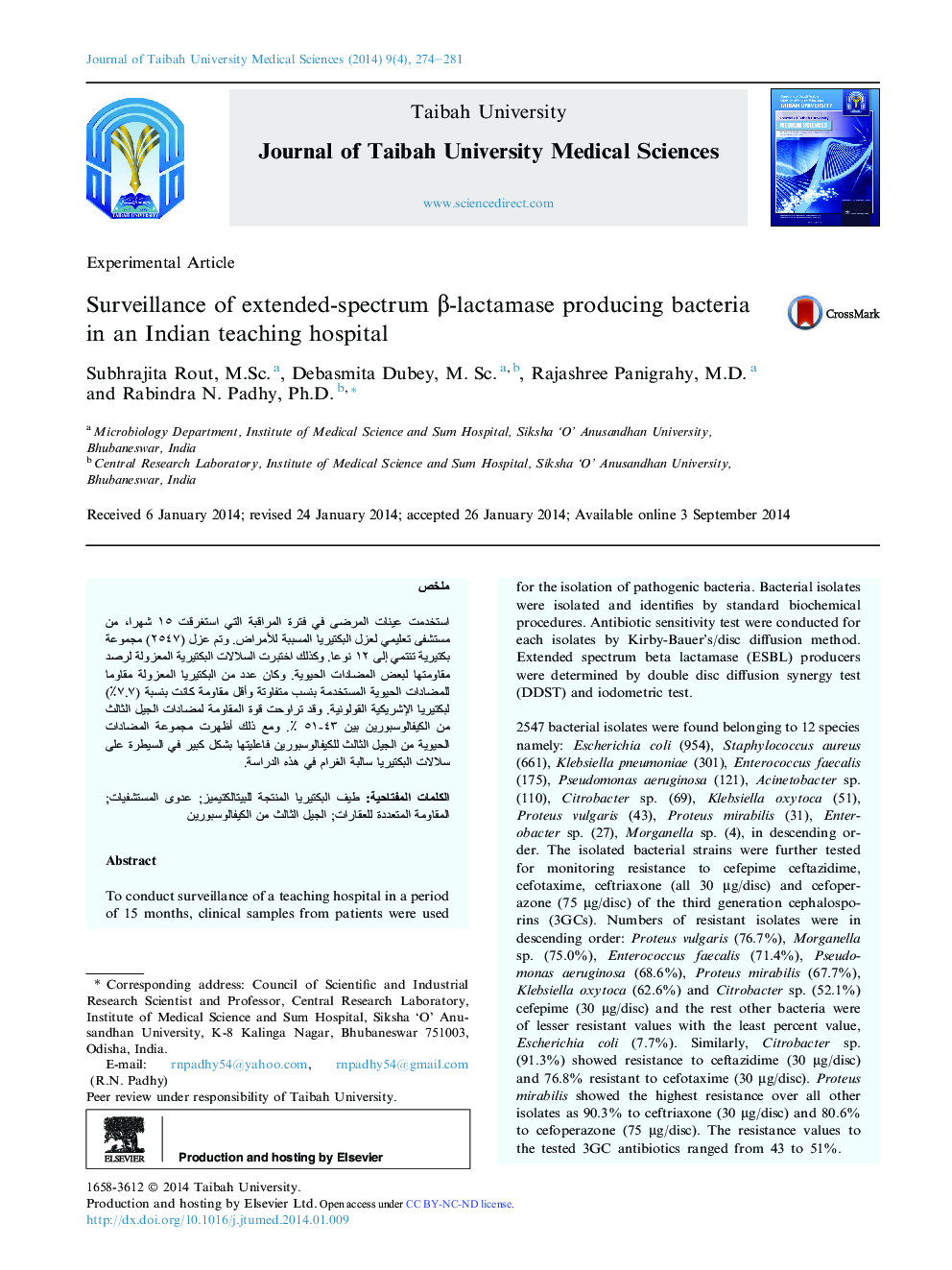| کد مقاله | کد نشریه | سال انتشار | مقاله انگلیسی | نسخه تمام متن |
|---|---|---|---|---|
| 3484435 | 1233744 | 2014 | 8 صفحه PDF | دانلود رایگان |

To conduct surveillance of a teaching hospital in a period of 15 months, clinical samples from patients were used for the isolation of pathogenic bacteria. Bacterial isolates were isolated and identifies by standard biochemical procedures. Antibiotic sensitivity test were conducted for each isolates by Kirby-Bauer’s/disc diffusion method. Extended spectrum beta lactamase (ESBL) producers were determined by double disc diffusion synergy test (DDST) and iodometric test.2547 bacterial isolates were found belonging to 12 species namely: Escherichia coli (954), Staphylococcus aureus (661), Klebsiella pneumoniae (301), Enterococcus faecalis (175), Pseudomonas aeruginosa (121), Acinetobacter sp. (110), Citrobacter sp. (69), Klebsiella oxytoca (51), Proteus vulgaris (43), Proteus mirabilis (31), Enterobacter sp. (27), Morganella sp. (4), in descending order. The isolated bacterial strains were further tested for monitoring resistance to cefepime ceftazidime, cefotaxime, ceftriaxone (all 30 μg/disc) and cefoperazone (75 μg/disc) of the third generation cephalosporins (3GCs). Numbers of resistant isolates were in descending order: Proteus vulgaris (76.7%), Morganella sp. (75.0%), Enterococcus faecalis (71.4%), Pseudomonas aeruginosa (68.6%), Proteus mirabilis (67.7%), Klebsiella oxytoca (62.6%) and Citrobacter sp. (52.1%) cefepime (30 μg/disc) and the rest other bacteria were of lesser resistant values with the least percent value, Escherichia coli (7.7%). Similarly, Citrobacter sp. (91.3%) showed resistance to ceftazidime (30 μg/disc) and 76.8% resistant to cefotaxime (30 μg/disc). Proteus mirabilis showed the highest resistance over all other isolates as 90.3% to ceftriaxone (30 μg/disc) and 80.6% to cefoperazone (75 μg/disc). The resistance values to the tested 3GC antibiotics ranged from 43 to 51%.ConclusionAntibiotics inhibiting β-lactamase production were used with a blithesome control over 12 ESBL bacteria. The 3GC antibiotic group was significantly effective in controlling the GN bacterial strains in this study.
Journal: Journal of Taibah University Medical Sciences - Volume 9, Issue 4, December 2014, Pages 274–281